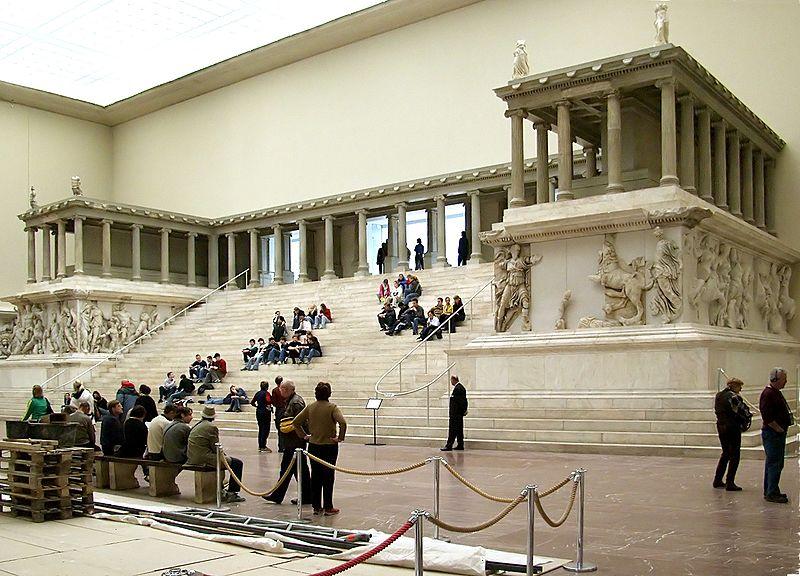Historical fragments: The Pergamon altar
All around us the bodies rose out of the stone, crowded into groups, intertwined, or shattered into fragments, hinting at their shapes with a torso, a propped-up arm, a burst hip, a scabbed shard, always in warlike gestures, dodging, rebounding, attacking, shielding themselves, stretched high or crooked, some of them snuffed out, but with a freestanding, forward-pressing foot, a twisted back, the contour of a calf harnessed into a single common motion.

Main content
Thus opens the Peter Weiss novel The Aesthetics of Resistance (1975). The reader is drawn into the struggle between gods and giants, as it is depicted in the long frieze (113 meters long and 2.3 meters high) at the Pergamon altar in the Pergamon Museum in Berlin. The gods stand for civilization and reason, the giants (with snake bodies) for evil. The altar was built around 165 BC. in the city of Pergamon at Turkey's west coast, as a thank you to the god Zeus for having helped the people to overcome their enemies.
The plot of Weiss's novel is set in 1937. Working class organizations are crushed, and only small, clandestine groups continue the resistance against Hitler and Nazi Germany. We meet some of them in the novel, they immerse themselves into the images of suffering and the struggle against barbarism.
The Aesthetics of Resistance is an example of how the fragments of the past can come alive by being reinterpreted. Weiss was not the first to take an interest in the Zeus altar. Politics is part of the history of the reliefs both in ancient and modern times. It was a German emperor, William I, who ensured that it ended up in Berlin. In 1871, all the German states were united in the new German Empire. The new emperor was looking for monuments that might cast symbolic luster on himself and the new Empire. The choice fell on the Pergamon altar, with all its connotations of civilization and Western values. With the Turkish sultan's permission, the Zeus altar was excavated and moved to the German capital.
During the Second World War, the Pergamon altar was severely damaged. In 1945 it was looted by Soviet troops, and part of it ended up in the Stalin Museum in Moscow. The dictator of communism would also bask in the glory of the ancient altar. Some of the conquests were returned to the GDR in 1958, and after the fall of communism still more were returned.
With Marius Engh’s art project The Living are governed by the dead in the HF building, the gods’ battle against the giants enter our immediate environment. We are invited to immerse ourselves in these ancient fragments, and to reflect on what the humanities can contribute to the fight between civilization and barbarism.
Text: Siri Meyer Translation: Nora Sørensen Vaage
